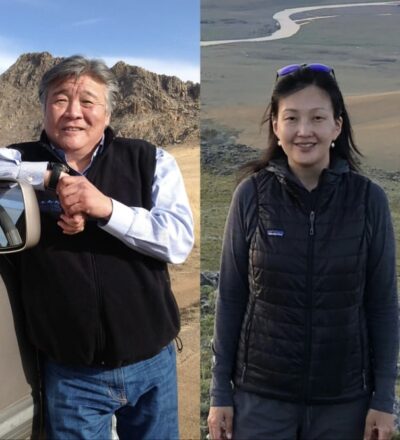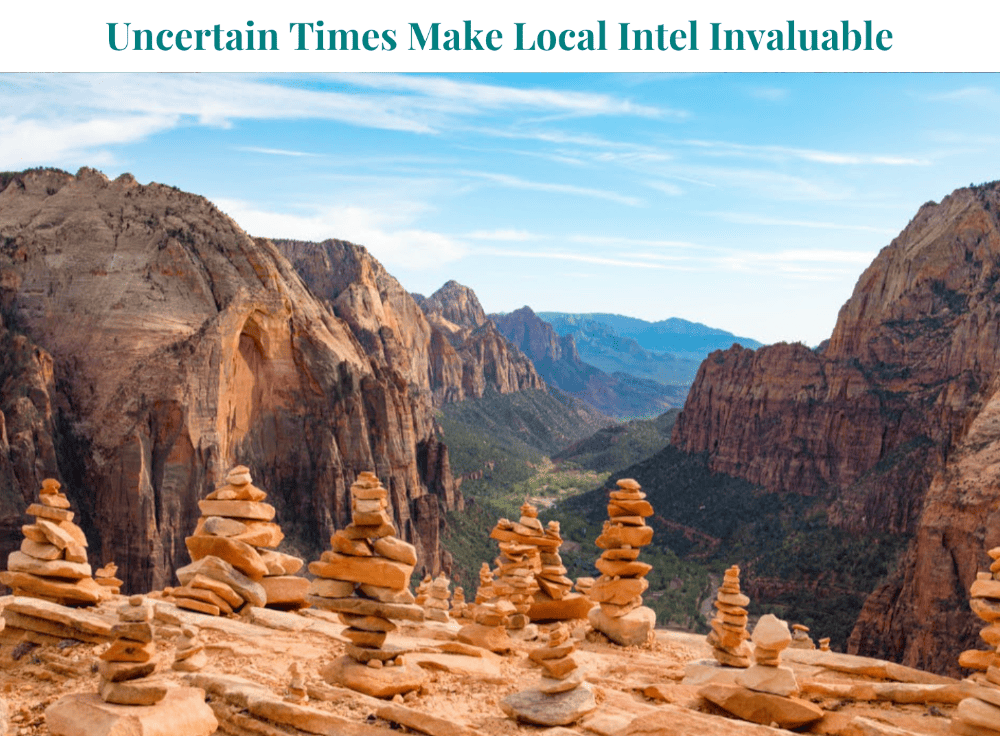Mongolia: Insider’s Guide
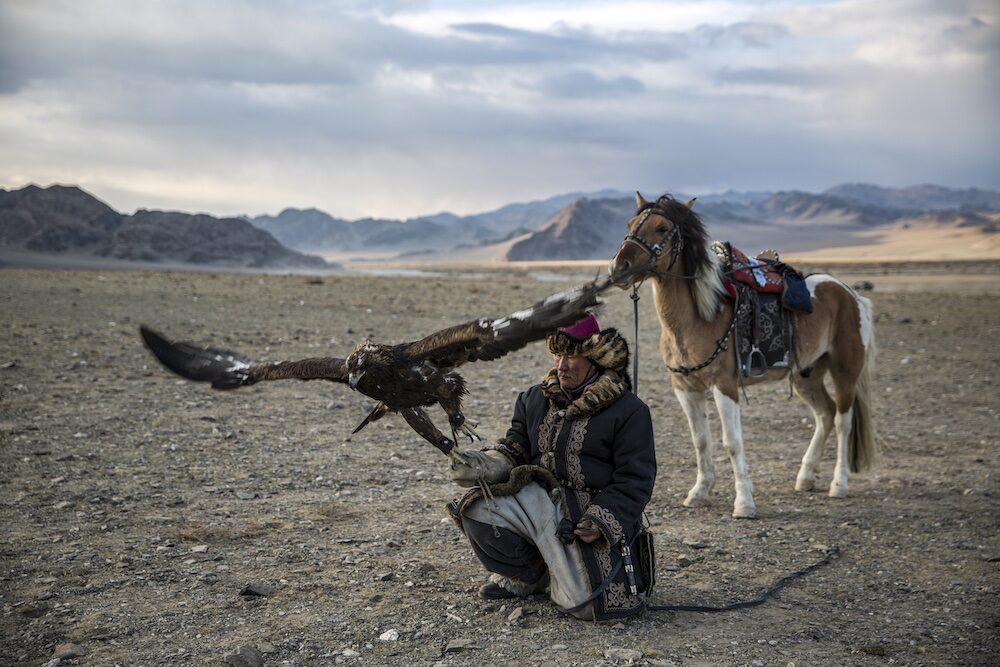 An eagle hunter in Mongolia. Photo courtesy Nomadic Expeditions
An eagle hunter in Mongolia. Photo courtesy Nomadic Expeditions
The insider advice on this page is from two of Wendy’s Trusted Travel Experts for Mongolia: Jalsa Urubshurow and Undraa Buyannemekh of Nomadic Expeditions.
A Mongolian-American who grew up in New Jersey, Jalsa started out in construction and used the proceeds from his successful business in that sector to found a travel company in 1992 and bring tourism to a place—Outer Mongolia—that was once synonymous with the end of the earth. Jalsa now splits his time between Mongolia and the U.S., leaving daily operations to trusted deputy Undraa Buyannemekh, who was born and raised in Mongolia and attended college in the U.S. Jalsa and Undraa don’t simply design itineraries that cross off sights on a checklist; they pair travelers with experts—historians, scientists, artists, photographers—who give visitors a comprehensive understanding of the country’s history, culture, and traditions.
What to See and Do
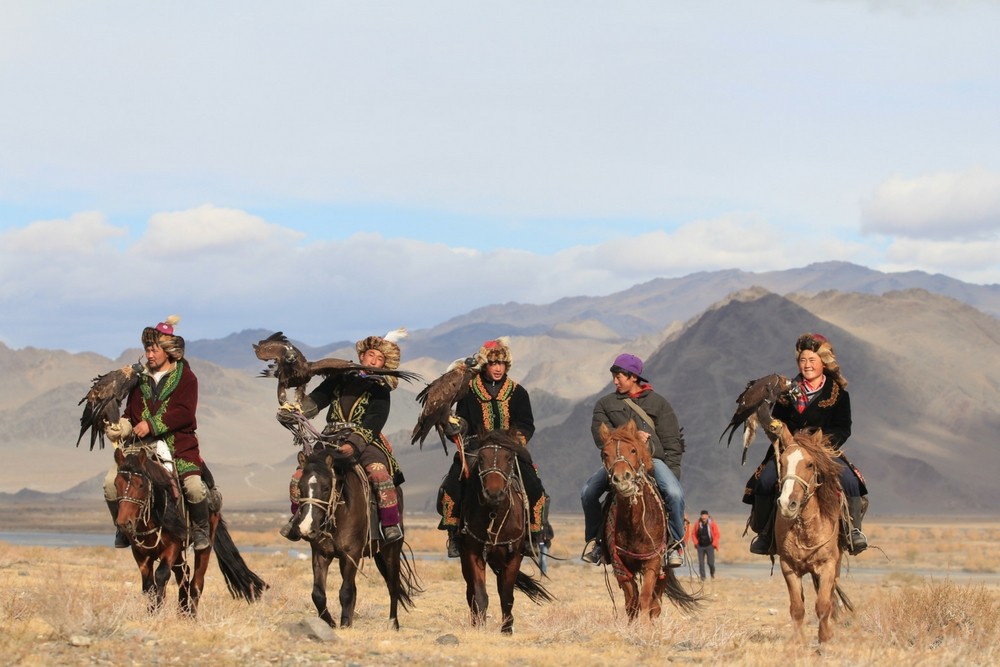
Riding horses with Kazakh hunters is a once-in-a-lifetime experience. Photo courtesy Nomadic Expeditions.
Don’t miss
Travelers often ask to skip Ulaanbaatar, but Mongolia’s capital has quite a few attractions worth visiting. The National Museum of Mongolia and the Fine Arts Zanabazar Museum showcase both ancient artifacts and contemporary artwork by local artists, and there is a thriving gallery scene as well. The National Folk Song and Dance Ensemble, which was first formed by Kublai Khan and resurrected after the communist period, performs at the state theater during the summer. You can also shop here for the world’s finest cashmere, along with traditional felt slippers and fur hats.
Hidden gem
Choijin Lama Temple, in the heart of Ulaanbaatar, is a hidden gem of history and architecture. The temple’s museum houses various Buddhist artifacts dating back to the 19th century, as well as thangkas (paintings on silk or cotton), a comprehensive collection of tsam masks, and several masterpieces by famed Mongolian sculptor Zanabazar.
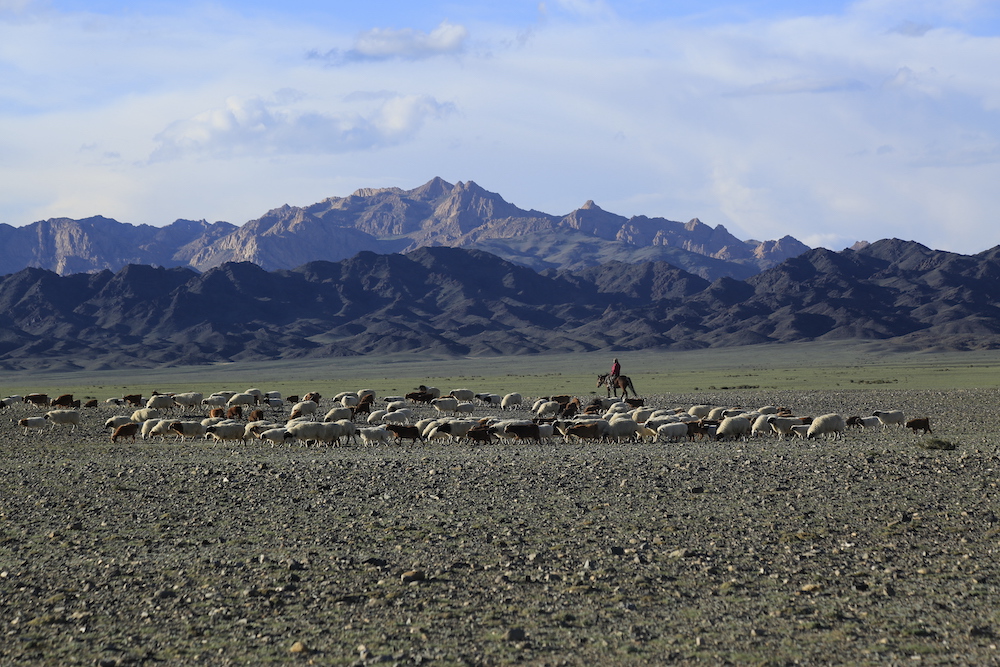
A herder and their sheep in Mongolia. Photo courtesy Nomadic Expeditions
Best for thrill seekers
Mongolia offers several fabulous outdoor options: horse trekking through the northern region’s spectacular forests and meadows; hiking the Altai Mountains in search of the snow leopard; or riding horses with Kazakh hunters while their Golden Eagles hunt rabbits and foxes.
Bragging rights
Many of paleontology’s greatest finds have come from Mongolia, and scientists continue to hunt for fossils here; Jalsa can not only provide entrée to their remote work areas (and set up luxury camps nearby), but also arrange behind-the-scenes access to the Paleontological Lab, part of the Natural History Museum in Ulaanbaatar. This underfunded museum has been closed for some time, but his travelers are welcomed into the rooms where paleontological treasures are kept, and where scientists toil away toward the next big discovery.
Although most of the country’s Buddhist monasteries were either destroyed or converted into museums during the Stalinist purges of the 1930s, Erdene Zuu Monastery in Karakorum survived. Jalsa can arrange a private blessing with a senior lama there.
Where to Stay and Eat
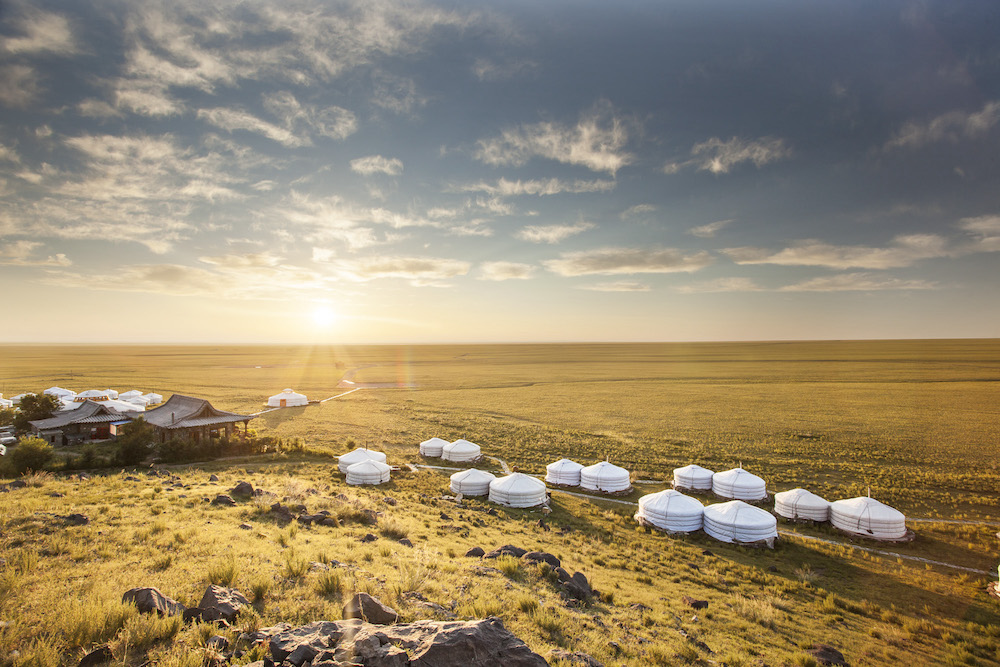
Three Camel Lodge in the Gobi Desert. Photo courtesy Nomadic Expeditions
Best bang-for-your-buck hotel
The Shangri-La in Ulaanbaatar provides five-star accommodations and service (the latter can be lacking at the city’s more historic hotels), and with a sensible price tag. A true luxury property, it has a magnificent porte cochère and lobby, and well-appointed rooms. The complimentary breakfast and cocktails in a private lounge make the slightly more expensive Horizon Club rooms a good deal for many travelers transitioning between the comforts of home and Mongolia’s remote—and sometimes rough—countryside.
Best-value splurge hotels
Slightly north of Ulaanbaatar, Terelj Hotel and Spa lies in a beautiful river valley adjacent to Gorkhi-Terelj National Park. This pristine setting is matched only by the creature comforts (marble bathrooms, Mongolian cashmere blankets, Egyptian cotton linens) that draw many members of parliament to these posh rooms. The spa is respectable, though perhaps not world-class. The Executive Rooms are a bit small, so if you want space to spread out, opt for a Superior Room or a suite.
Further south and set within the serene Gobi Desert, Jalsa’s own Three Camel Lodge is an eco-friendly and luxurious take on gers, the traditional felt tents used by nomads. Besides providing the only high-end accommodations in the Gobi Desert, the lodge also breeds native Mongolia Bankhar dogs to place with Gobi nomads to protect wildlife, supports a local music school, started a college scholarship program, and helped local families develop farms that provide food for the nearby ger camps. Note that the traditional ger design doesn’t allow for windows—but every door opens onto a lovely view of mountains or desert.
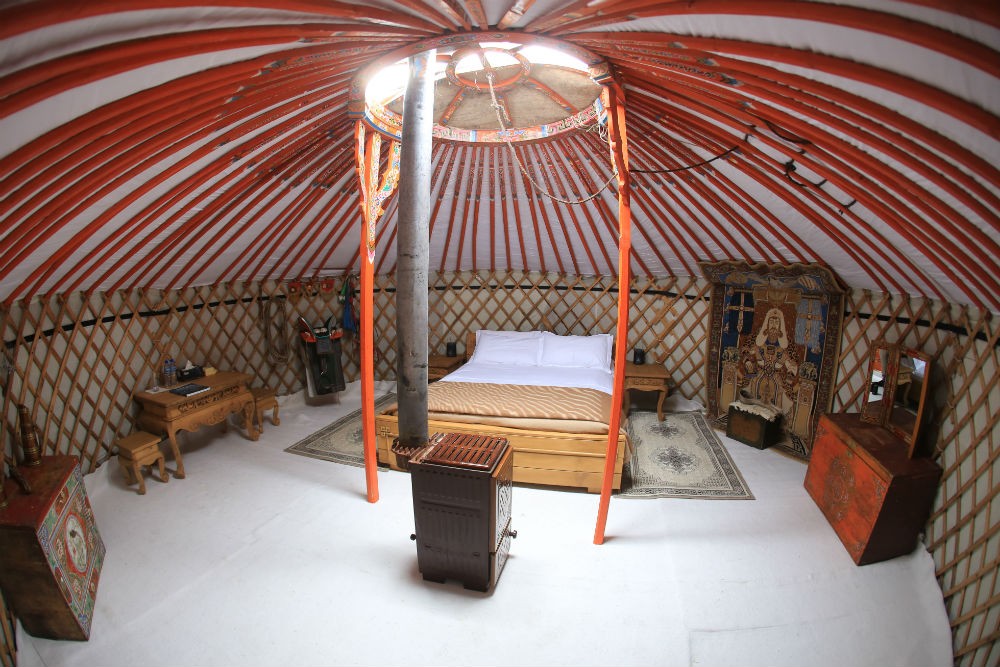
The inside of a luxury ger, Mongolia. Photo: Nomadic Expeditions
Dish to try
Huushuur: traditional fried dumplings usually filled with meat (nowadays, you can sometimes find them filled with vegetables). They’re available throughout the country in cafés and restaurants, but they are especially memorable when sampled at the table of a Mongolian family.
Best Times to Go
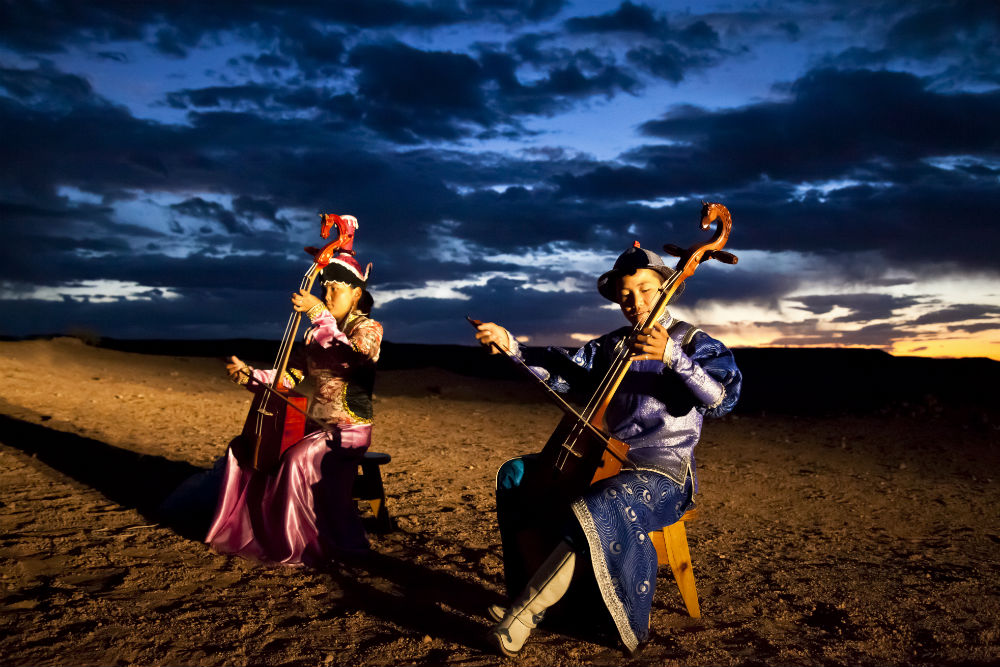
Early June is ideal for avoiding crowds, while the temperate weather of late August through September is perfect for camel trekking. The Golden Eagle Festival, a Kazakh hunting tradition in the Altai Mountains, is held annually in early October.
Worst Time to Go
December through April. Winter in Mongolia can be harsh, and many ger camps close during this time, limiting accommodations.
Scam Alert
It is illegal to remove fossils from Mongolia—but that doesn’t stop people from attempting to sell them to unsuspecting tourists.
Biggest Rookie Mistakes
Not allowing enough time for traveling within the country. All domestic flights originate in Ulaanbaatar, so you are constantly returning to the capital in order to get from one region to another. To make matters worse, flights are often delayed and canceled.
Assuming that the Naadam Games—a festival of traditional sports such as horse racing, archery, and wrestling—are exclusive to Ulaanbaatar. Festival events are held all over the country. In the capital, the games are an increasingly touristy and grand occasion, a kind of national Olympics—but in smaller locations travelers can have a more immersive cultural experience, with competitors arriving on horseback and families gathering to celebrate the summer season.
Airport Intel
When you first arrive in the country, make sure to book the V.I.P. greeting service at Ulaanbatar’s Chinggis Khaan International Airport. This service allows travelers to bypass the lines at passport control and baggage claim.
Tipping Tip
Tipping is not customary in Mongolia, but many in the service industry have come to expect it from foreigners. If you choose to leave a gratuity, it should be about 5 to 10 percent.
Don’t Forget to Pack
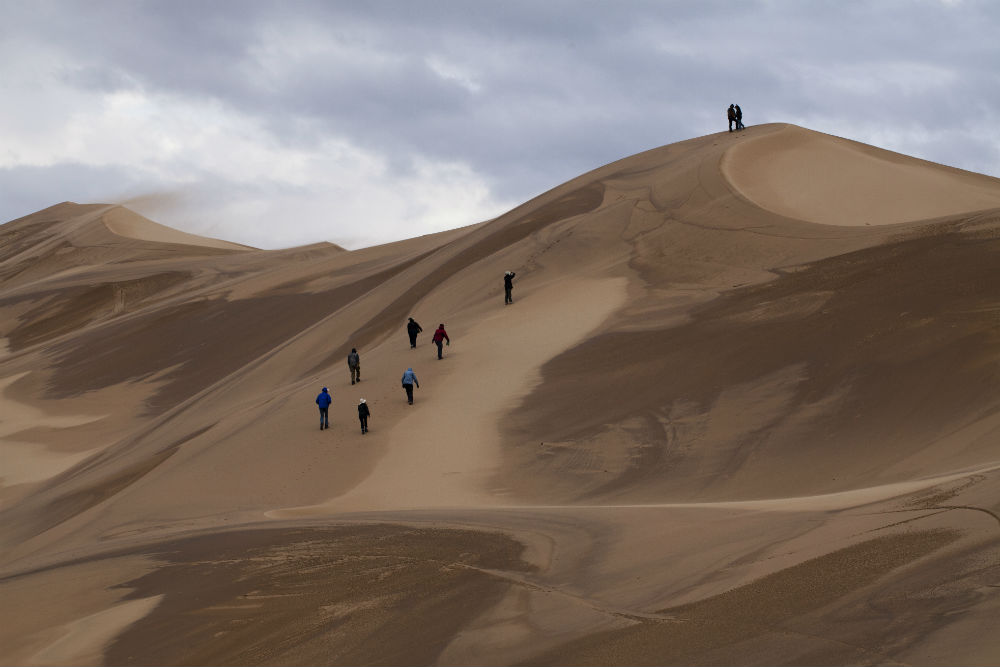
The Mongolian climate is extremely dry, so moisturizer and lip balm are essential.
Can't-Miss Photo Op
Sunset on a clear day at the Flaming Cliffs in the Gobi, when the sandstone glows bright orange.
The Souvenirs
Colorful Kazakh tapestries crafted by locals in the Altai region and sold throughout the country. Muslim Kazakhs have lived in this province for centuries, making it the only part of this majority Buddhist country that is not ethnically homogeneous.
Mongolian vodka is the smoothest in the world—it’s often distilled as many as ten times. You’ll find dozens of brands, many playing off the notoriety of Genghis Khan.

